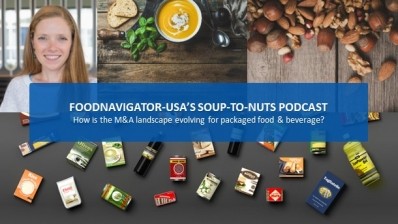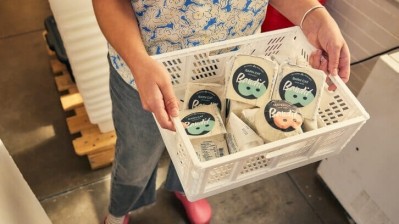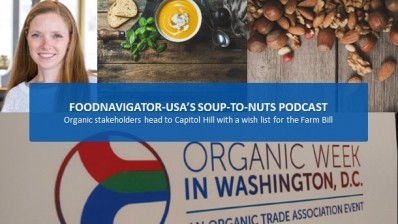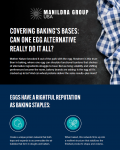Soup-To-Nuts Podcast: Spate leverages machine intelligence to identify, separate emerging trends from fads
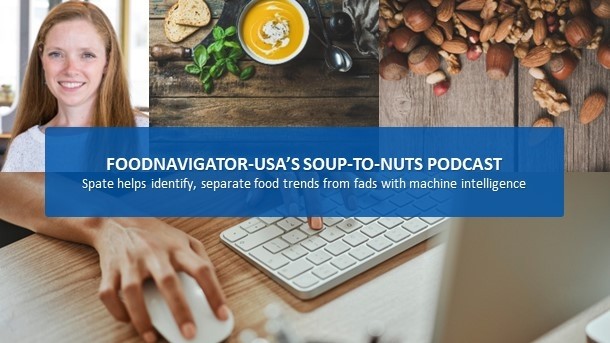
For example, when conversations about keto, paleo and even regenerative organic first emerged nearly all were dismissed as too narrow, too difficult to follow or as a sub component of a larger established trend that would never amount to much on its own. Time has shown all three not only have staying power but dramatically reshaped the food and beverage landscape. But will the same hold true for the Carnivore diet touted by podcaster Joe Rogan or the Gut and Psychology Syndrome diet promoted by Dr. Natasha Campbell-McBride? And even if the diets fizzle, how might they influence innovation in the short term or pave the way for other more sizeable shifts in eating patterns?
Spate, a machine intelligence platform that cut its teeth in the fashion industry before recently expanding into food and beverage, is helping innovators from companies of all sizes answer these questions and more by sifting through Google search data and TikTok posts to identify and qualify emerging fads and trends.
In this episode of FoodNavigator-USA's Soup To Nuts podcast, Spate Co-Founder Yarden Horwitz shares how product and brand developers can uncover today tomorrow's consumer interests and distinguish between fads and trends. She also shares how emerging diets are influencing snack sales, what functional benefits and ingredients most intrigue consumers and other dynamics influencing the better-for-you snack landscape.
[Editor’s note: Never miss an episode of FoodNavigator-USA’s Podcast or Soup-To-Nuts – subscribe today.]
Spate pairs predictive modelling, competitive analysis and contextual data to identify trends, consumer engagement
When it comes to trendspotting, and separating trends from fads, Horwitz explains Spate analyzes more than 20 billion online search signals and content-appropriate TikTok videos which it pairs with predictive modelling, competitive analysis and contextual data to answer three main questions: What is the next big trend? Who is owning the space? And how to position the trend?
Spate mines Google search data and insights from TikTok to uncover trends across several categories, including food and beverage, which it displays in a dashboard for a monthly subscription.
“We focus on search data because it is really powerful at telling me what people are thinking. Every time they type something in the search bar, we are telling you what is top of mind for them. They are often sharing things that they might not even share out loud with their friends and family,” Horwitz said.
By combining this with TikTok search trends, she added, the company can better identify the extent and evolution of trends.
Knowing what consumers are looking for and how they are engaging with ingredients or foods now can help brands quickly adjust how they market existing products and leverage social media to drive sales – but Horwitz said it can also reveal areas ripe for innovation, which Spate helps users evaluate by distinguishing between rising stars, which quickly could fizzle as fads, or sustained and seasonal trends that promise to grow “slowly but surely” in the coming years.
“The way we use AI, and understanding trends and big data, is basically we are looking at the patterns we see and how these trends are taking off. We have different clusters that we basically classify. One of those is the rising star. So rising star trend is a trend that is seeing really, really strong growth out of nowhere. And that is what we deemed to be the riskiest, because you do not know if it is here to stay. … Whereas a trend [that] is sustained or seasonal, …or are taking off, but growing slowly, but surely, year on year. And these are less risky trends, they are more confident that these types of trends are likely to last. And so if you are a brand that does not want to take a big risk, you probably want to stick with a sustained or seasonal rising trend. These are just safer bets in general, versus a rising star, which might be the next big thing,” or a flash in the pan, Horwitz said.
She added the more formats or platforms on which the search appears the more likely it is to last. For example, a trend that appears on TikTok but not Google suggests that it is for entertainment, but not gathering enough traction to inspire additional research or purchase, she said.
Evaluating niche diets to identify the trends of tomorrow
Two emerging diets that Horwitz Spate is tracking which are influencing how consumers snack, but for which it is too early to tell if they are fads or long-term trends, are the Carnivore Diet and the GAPS Diet – or the Gut and Psychology Syndrome diet.
The Carnivore Diet is focused on consuming only meat – and some dairy but not produce – as a weight loss tool, while the GAPS Diet seeks to understand the connection between brain function, mood and food.
When evaluating the long-term potential of a diet trend or its potential influence on product development, Horwitz advises companies to consider who is promoting the trend and whether they want to be associated with that person. For example, the Carnivore Diet is promoted by Joe Rogan, who is controversial, divisive and does not have a nutrition background. GAPS is promoted by a neurologist and nutritionist with a medical degree.
The influence of both diets on snacks can be seen in Spate’s research. For example, Horwitz notes, there is an uptick in portable meat snacks – especially sticks – that can be consumed easily at the gym or on the go. Jerky and biltong, however, are not on the rise – suggesting consumers following the Carnivore Diet or snacking at the gym may prefer individually wrapped products.
The GAPS diet has much lower awareness, but it is connected to other trends that are influencing snacking, including mood management and inflammation reduction.
While not a diet per se, rising interest in and access to weight loss drugs like Ozempic are changing the conversation around snacking, not just for people prescribed a GLP-1 but also for their friends and family and anyone who wants the benefit of these drugs but is not taking one.
Horwitz pointed to the cottage cheese craze as an example of a food benefitting from enhanced Ozempic awareness and the need for those taking weight loss drugs to consume high protein food and gravitating to portion control and low-calorie options.
Snack trends: Fun trumps sugar reduction
What consumers are not searching for can also be an indicator of where a category, like snacking, is headed. For example, while sugar reduction is big in beverage, Horwitz said it is not often associated with searches related to snacks.
Rather, she said, consumers searching for snacks often look for fun packaging or creative uses, textures, flavors or pairings. Some examples of trending snack searches include freeze dried candy, pairing unexpected flavors like sourdough with chocolate in a cookie.
Companies that want to learn more about what consumers look for from snacks – or any food and beverage category – can checkout Spate’s dashboard and sign up for trends alerts at Spate.nyc.
